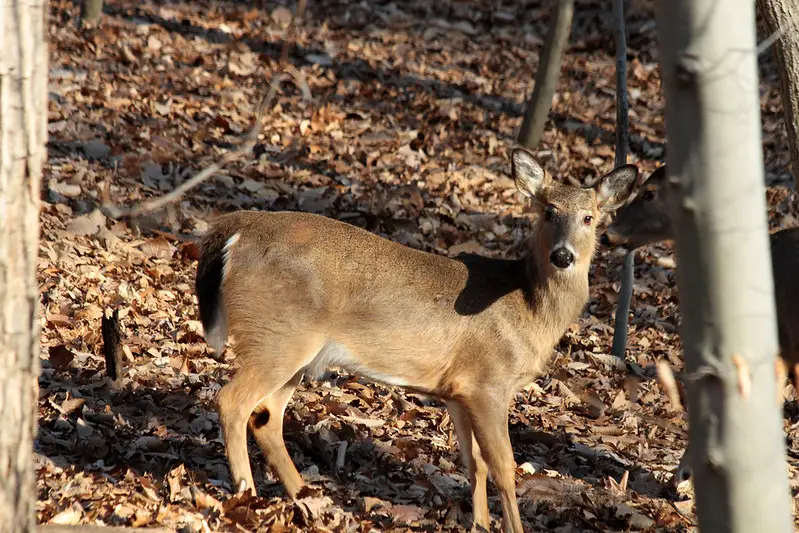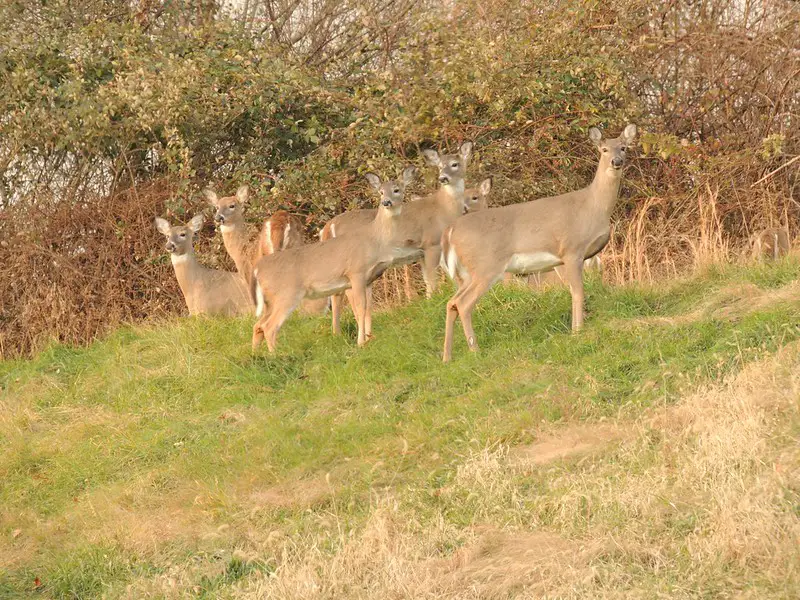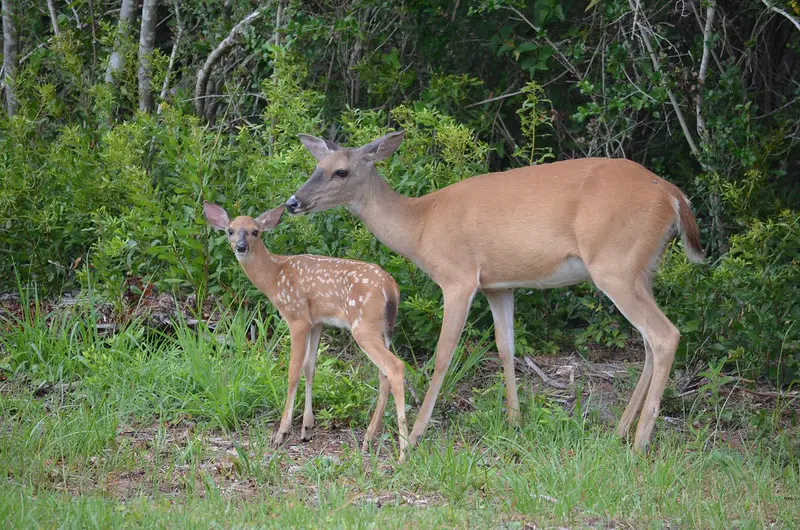Every deer hunter should call in a doe at least once per season. Doe venison, especially from young does, is a tasty freezer filler. But that’s just one excellent reason to call in a doe. Deliberately targeting does over bucks doubles the fun and excitement of deer hunting. It can also keep you from becoming a rack hunter and turning your deer hunting days into an imaginary competition with other hunters.
Related: What do deer hear, see, and smell?
Related: The three best deer hunting calibers.

How to call a doe: Understanding doe behavior.
Just about every deer hunter understands two things about does.
- Does are primarily solitary or only in the company of their fawns during the spring and summer months.
- Does become much more social as autumn approaches.
As the days begin to shorten, does start to create or reestablish relationships with other does and assemble into herds. This herding behavior provides their now-weaned fawns with increased security from predators. This protection is vital when their mothers begin to cycle and run off for periods of time.
Doe groups are highly organized and are built around an older female who will lead the group for the next few months. This leader, typically the doe that fawns first (and therefore picks an area to raise the fawns), will respond first to any threats while the rest of the group remains behind.
The fawning area the leader doe selects (near both heavy cover and a water source) essentially becomes an anchorage point for the herd. The does will stay close to this area for the greater part of their lives and even for generations.
Related: How to age deer tracks.
Related: How to track a wounded deer.

To call in a doe, first find out where the does are herding together.
If you want to call in a doe every deer hunting season, there is no better place to begin your hunt than where the does and fawns herd together.
These areas are essential to the survival of the fawns and does. They provide a habitat with an abundance and wide variety of food and nutrients the does and fawns need during the fawning and fawn-rearing periods. And there is excellent cover for both mother and fawn to slip into if danger approaches.
Finally, what makes this the ultimate location to call in deer? Two reasons: The deer are relaxed, and they are primed to respond to doe and fawn bleats.
Related: How to make a deer food plot.
Related: 9 expert tips for calling deer all season.
Doe grunts and fawn bleats.
Once you locate where the does are herding together and slip into your chosen stand location, it’s time to start calling.
Quick question: Do you know where to shoot a deer to make a clean ethical kill? If not, please read my article, Where to shoot a deer.
Doe grunts. A doe grunt is a soft call that essentially means, ”come over here.” To make it, softly blow three times, pausing for a moment between blows. Repeat every ten to fifteen minutes.
Doe grunts done correctly are discrete enough not to give away your position. You should also not be surprised to see a fawn appear, as this is the sound a doe makes to call her fawns in at feeding (nursing) times.
Fawn Bleats. A fawn bleat is a sad, pitiful sound made by fawns trying to get their mother’s attention. Fawn bleats are effective because a doe is driven by her maternal instincts to respond to offspring in distress. Even doe without a fawn will come into this call.
To use a fawn bleat, make a few soft calls (2-3 with a slight pause between each sound) and then wait 15-20 minutes before repeating.
Two important thing to remember:
- No animal, even one in terrible distress, will make too much noise. Do not call too often, and do not call too loudly.
- When you use a fawn bleat, be prepared for various animals to respond. A fawn bleat is often used for coyote hunting, but other predators and even bucks will often investigate this sound.
Related: How much meat do you get from one deer?
Related: What are deer antlers?

Watch how the doe responds to your doe grunts and fawn bleats.
While you are trying to call in ”resident” deer in this scenario, another unrelated doe may pass by and hear your calls. This doe will come in much more cautiously. Remember, she is an intruder—and the doe herd leader will drive her out with her hoofs if she spots her intrusion.
This intruder could also be a problem for you. This doe is much more easily spooked than the resident does, and if she starts flagging and alarming, the rest of the herd will naturally avoid the area.
To keep any doe from alarming, you must watch their reactions and read their body language. When you believe a doe is getting spooked, stop calling and let her go. You don’t have to keep calling to get her to close in on your position. In fact, when you spot the doe, shut up and let her do her thing.
You might only want to call after a doe has appeared if she turns away and heads back in the direction she came from. Let her take a few steps first; she may be trying to lure you out.
Related: Can you eat a deer with warts?
Related: Why does my female deer have antlers?
How to call in a doe, the final step.
Most of the time, a doe in a herding area that responds to a call from another doe or fawn will commit to that call and get close enough for you to take your shot. Just make sure you keep an eye on her, let her take her time, stay off that caller while she is nearing, and keep her as relaxed as possible.
If you are interested, here are a few other selected deer hunting articles I have written that will help you have a successful deer hunting season. Good luck!
How to use deer baits. What are the best deer hunting hours of the day? Is deer hunting in rains worth it? 4 Deer hunting mistakes you can easily avoid.

